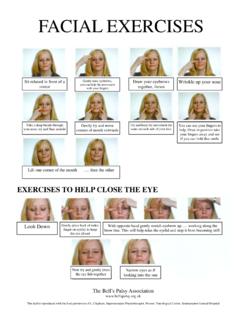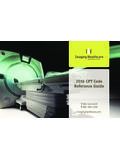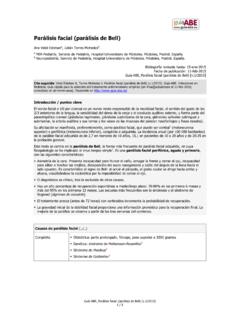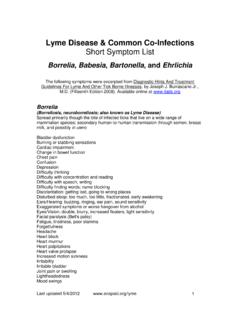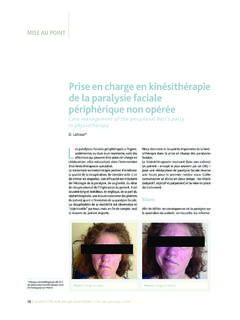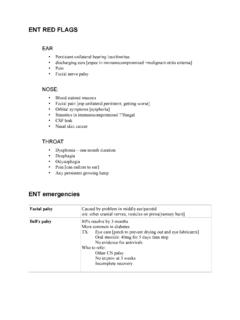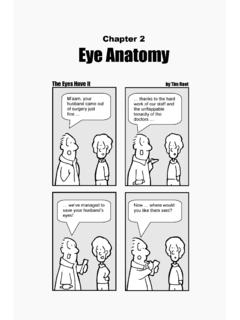Transcription of Stroke Thrombolysis Awareness Initial patient assessment ...
1 Initial patient assessmentUsing , Rosier, & NIHSST ools5 Acute Trusts - 6 Primary Care Trusts Ambulance Trust 4 Local AuthoritiesStroke Thrombolysis AwarenessAdapted fromAims Improve recognition of Stroke and TIA Develop skills for assessment and triage in acute settings Gain familiarity with procedures required for Thrombolysis Incidence of Stroke now higher than that of acute coronary syndromes For 1 million inhabitants ,There will be 2400 strokes per year (1800 first ever, 600 recurrent or after TIA)Of these 700 (29%) will die 600 (25%) will be dependent 1100 (46%) will be independentBackground Information Stroke varies All begin suddenly patients do not leave hospital survivors need help every day due to: Weakness Speech problems Swallowing problems Visual problems Memory problems Urgent recognition & Stroke unit admission improves recoveryBackground InformationInitial DiagnosisClinical presentations of Stroke Acute onset combination of Face / arm / leg weakness or sensory loss Loss of co-ordination Speech disturbance Visual disturbance Acute onset does not mean total deficit within seconds Most TIAs are < 20 minutesStroke?
2 ACT FASTN ational Stroke Strategy QM1, Raising Awareness , QM2 Time is MOVEMENTS Ask patient to show teeth, Is there an unequal smile or grimace, Note which side does not move wellARM MOVEMENTS Lift the patient s arms together to 90 if sitting, 45 if supine and ask them to hold the position for 5 seconds before letting go, does one arm drift down or fall rapidly? If one arm drifts down or falls, note whether it is the patient s left or rightSPEECH Listen for NEWdisturbance of speech Listen for slurred speech, get patient to say British Constitution or Baby Hippopotamus Listen for word-finding difficulties with hesitations. This can be confirmed by asking the patient to name objects that may be nearbysuch as a cup, chair, table, keys, pen Check with any person who knows the patient , IS THIS NORMAL FOR THEMTIME to ring 999 ROSIER1st.
3 Check patient s and correct if lowScoreYesNoHas there been loss of consciousness or syncope?-10 Has there been seizure activity?-10 Has there been NEW ACUTE onset (including on wakening from sleep) ofAsymmetric facial weakness+10 Asymmetric arm weakness+10 Asymmetric leg weakness+10 Speech disturbance+10 Visual field deficit+10 People with Stroke or witnesses can usually tell you the moment it happened There should be no prodrome Particular care with common differentials Bell s palsy Labyrinthitis Demyelination Space occupying lesion Worsening previous neurology with infectionSudden onset Abnormal movements are rare after Stroke Seizure at Stroke onset is rare and a contraindication to Thrombolysis Positive visual phenomena more likely to be migraine Headache is rare after Stroke and rarely prominent when present consider SAHS ymptoms and signs of
4 Lossof function Seizures Syncope (hypotension) Sugar (hypo or hyper) Sepsis (+ previous Stroke ) Severe migraine Space occupying lesions Si-chologicalStroke mimicsSo what s the rush? Confirm Stroke or TIA is the problem Help prevent aspiration, chest infections Consider emergency Thrombolysis Admission to a Stroke unitProved to be the best place for Stroke patientsOn arrival at A&E or the Stroke unit, the diagnosis of a Stroke or TIAshould be checked using an accepted test such as ROSIER (Recognition of Stroke in the Emergency Room).NICE clinical guideline 68 Issue date: July 2008 National Guidance Seizures Syncope (hypotension) Sugar (hypo or hyper) Sepsis Severe migraine Space occupying lesions Si-chologicalStroke mimics Onset never established for patients When the firstsymptom began Not just when deteriorated later Sleep backdate to bedtime Witnesses when was last seen to be OK Very important for Thrombolysis potential TIA risk stratificationWhy ?
5 Systematic neurological assessment for Stroke Quantitative measure of neurological deficit Reliable & reproducible tool ~ 5 mins to complete Score from 0 - 42 NIHSSN ational Institutes of Health Stroke Scale Identify and assess neurological deficits in Stroke patients Understand the measurement scale for quantifying neurological deficits in Stroke patients Consistently apply appropriate scores for neurological deficits in Stroke patients Use the scale to assess changes in neurological deficits in Stroke patients over timeWhy use the NIHSS ? Only score the first attempt at each instruction Do not help the patient Score what the patient actually does (not what you think they should be able to do) Attempt all tests, even if patient is aphasicHow to use NIHSST raining for NIHSS Available on-line Simple to do Certificated for 2 years Link available on Network Website The more you do it, the easier it Questions



